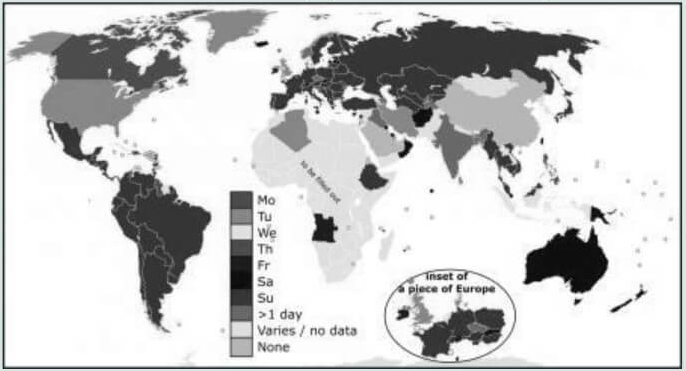By Jo Pratt, MapAction’s Communications Lead
March 9-10 is Holi, an ancient Hindu festival celebrating the arrival of spring with a riot of colour. To mark the occasion I asked the MapAction members for their interesting tips, facts, examples and experiences – anything they felt moved to share – about the use and importance of colour in mapping.
A few people sent me examples of maps they’ve created in which colour was particularly important in communicating and differentiating between different layers of information. Colour can be used to increase the amounts and types of information a map contains without reducing its readability. Divergent colours are often used to differentiate between types of data shown, while sequential colour scales can show degrees of prevalence of a particular feature.
MapAction’s Geospatial Services Coordinator, Matt Sims, shared with me a map of South Sudan he produced in 2014 for our partner ACAPS. He used divergent colours to differentiate between layers of information including data about food security, health and internally displaced people (IDP) movements. At the same time, a sequential colour scale gives an immediate visual indicator of the severity of the food insecurity in each county.
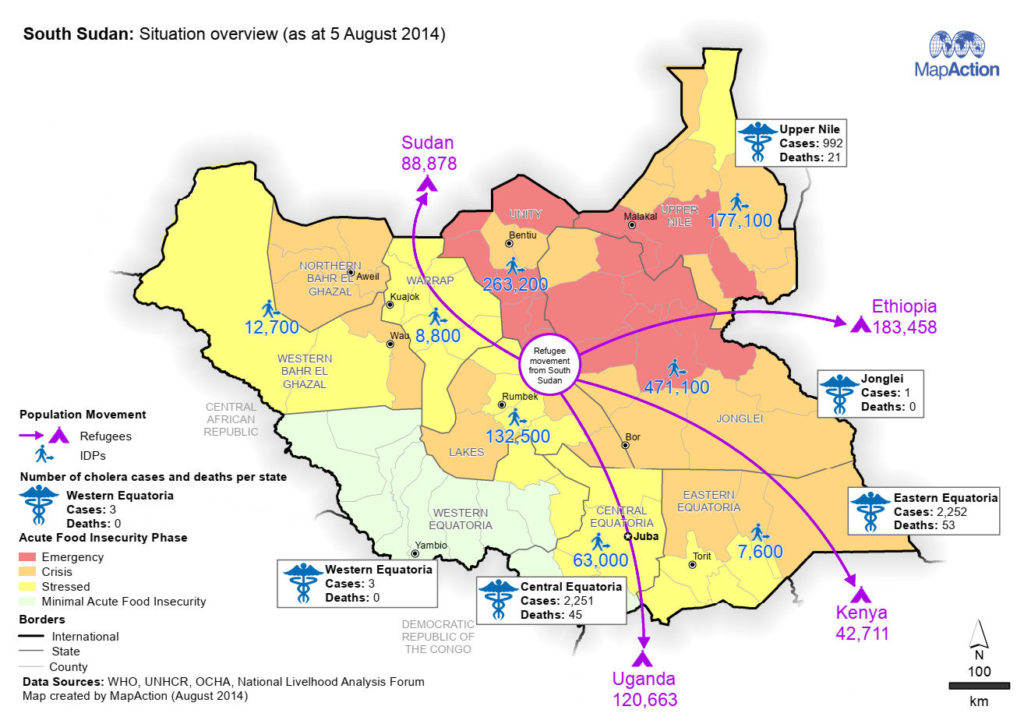
In this colourful 2017 language map of Borno, Eastern Nigeria (below), MapAction volunteer Mark Gillick used divergent colours to show at a glance which groups of IDPs were in locations with a local language other than their own. The map also shows the size and location of each community.
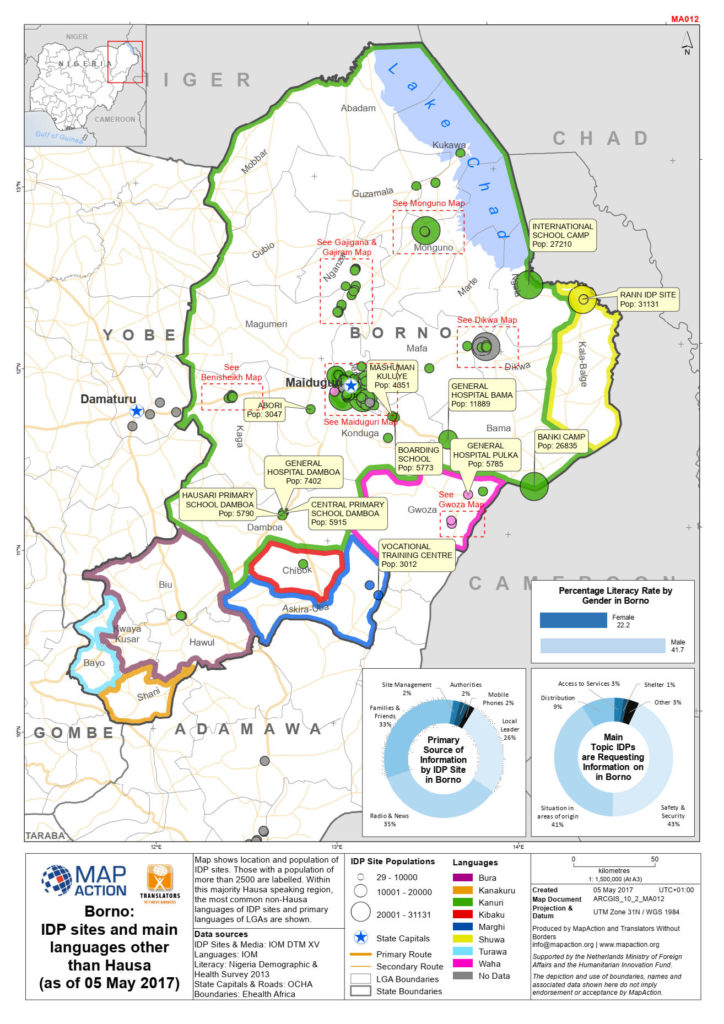
MapAction volunteer, Mark Gillick
Mark also flagged up the use of divergent colour to enhance communication in the London Underground map and the map below from 1895 of different nationalities in Chicago, USA.
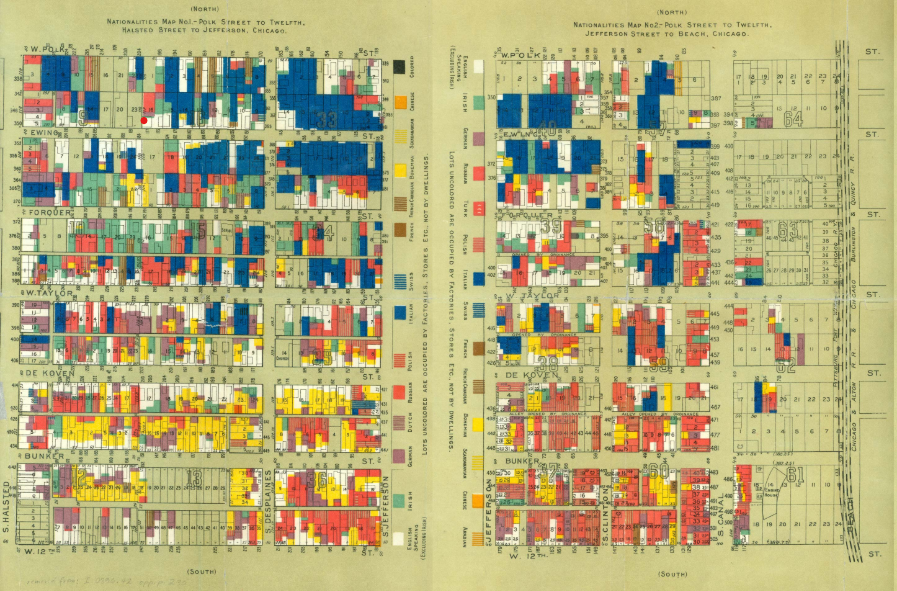
MapAction’s Head of Training and Learning Emma Mumford pointed me to a lovely looking and rather fascinating thematic map of age demographics in Switzerland created by mapping blogger Timo Grossenbacher. The sequential colour scale shows how different age groups are clustered in certain areas. It also demonstrates why yellow is generally taken to be a highlight colour, as the yellow and orange areas stand out against the purples.
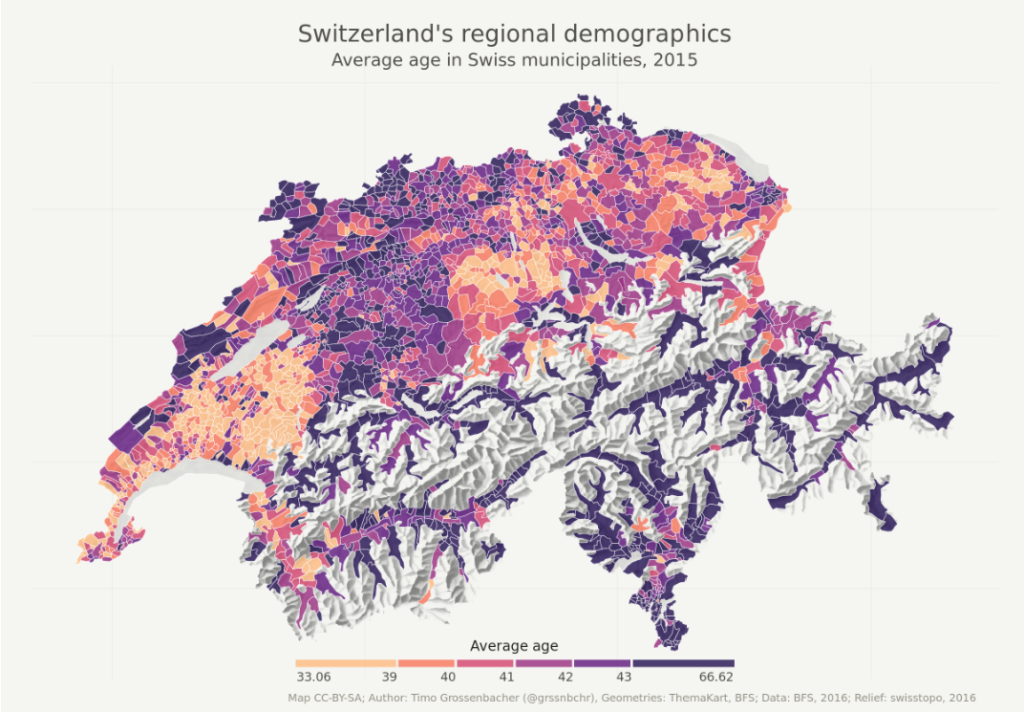
Colour considerations and cautions
I had an interesting chat with MapAction volunteer duo Becky and Andy Kervell. As well as flagging up ColorBrewer as a useful mapping resource, they talked me through some of the issues to bear in mind when thinking about colour choices.
- Colour blindness – this is quite a common problem. Most people with colour-vision deficiency have difficulty distinguishing between red and green. ‘Red-green’ deficiency affects one in 12 men and one in 200 women globally and can make it hard for them to tell the difference between reds, oranges, yellows, browns and greens. They may also have difficulty distinguishing between shades of purple and may not be able to tell red from black. ‘Blue-yellow’ deficiency – affecting vision of blues, greens and yellows – is another form of colour blindness that is much rarer. This Brilliant Maps blog explores what maps look like to people with colour-vision deficiency.
- Format, use and context – colours look different on screen compared to paper, so the ways in which a map is distributed and used should affect colour choice. If a map is intended to be desktop printed, questions around the quality and availability of printers and inks arise. If a colour map is printed in black and white, will it still be fit for purpose? If a map is shown via a projector, will details be visible?
- Cultural significances – colours have different meanings and associations in different parts of the world. For example, in some cultures, death is associated with black; in others, with white. Red can be associated with danger, good fortune or grief and death, among other things, depending on where you are. This is one good reason why team diversity, as well as awareness of and consideration for different cultures, is important in mapping – as elsewhere in life.
Another interesting fact I learned in the course of compiling this blog is that mappers use up a lot of blue ink. Because – oceans. According to MapAction’s logistics manager Andy Punter, who looks after all the kit used by our teams on deployment, we get through three or four times as many cyan ink cartridges as any other colour. So, if you ever come across a map with feathering around a land mass to denote the sea instead of a solid block of blue, thriftiness could be the reason.
This is the first in an irregular series of blogs in which we use an international event such as Holi, as an excuse (as if one were needed) to celebrate the diversity of mappers, maps and mapping.

